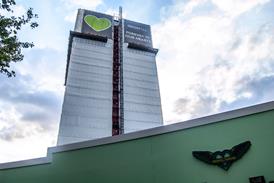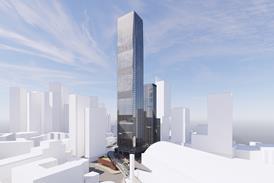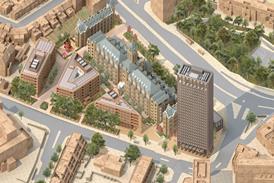- Home
 Grenfell refurbishment companies sued for more than £360m by council
Grenfell refurbishment companies sued for more than £360m by council Investors likely to be spooked by Trump tariffs in short term, London cost consultant Exigere warns
Investors likely to be spooked by Trump tariffs in short term, London cost consultant Exigere warns Manchester approves four towers including UK’s tallest outside London
Manchester approves four towers including UK’s tallest outside London Niall McLaughlin’s student resi scheme latest to be called in by London mayor
Niall McLaughlin’s student resi scheme latest to be called in by London mayor
- Intelligence for Architects
- Subscribe
- Jobs
- Events

2025 events calendar Explore now 
Keep up to date
Find out more
- Programmes
- CPD
- More from navigation items
Evolve and diversify. How flexible thinking can sustain high streets

The most successful high streets are those that look beyond a narrow retail focus, writes Fiona Scott
The death of the bricks-and-mortar retail experience has become shorthand for the imminent decline of our high streets, but where does the conception that high streets are all about retail come from?
The data certainly suggests they aren’t: In London, retail and leisure offerings only account for fewer than 20% of businesses in the high street ecosystem. Also clustering around high streets you will find professional and support services, wholesalers, manufacturing and public sector services, with job growth of 21% on or around the high street over the last five years. That is higher than the average growth across London. We all perceive the benefits of high streets. Speaking personally, our current studio knits into the urban fabric, and the local printers, cafes and yoga studios become part of everyday life.
At the launch of High Streets and Town Centres – Adaptive Strategies, commissioned as part of the mayor of London’s Good Growth by Design Programme, we heard Wayne Hemingway talk about his experience of London’s high streets in the 1980s. Tiny units, subdivided from larger ones, gave anybody, even those with no capital, a chance at a business. It was the place you went for your first job in a bar, to hang out on a Saturday night, to see a band and maybe, only because of all those other things, to buy a pair of trousers.
…
This is premium content.
Only logged in subscribers have access to it.
Login or SUBSCRIBE to view this story

Existing subscriber? LOGIN
A subscription to Building Design will provide:
- Unlimited architecture news from around the UK
- Reviews of the latest buildings from all corners of the world
- Full access to all our online archives
- PLUS you will receive a digital copy of WA100 worth over £45.
Subscribe now for unlimited access.
Alternatively REGISTER for free access on selected stories and sign up for email alerts


